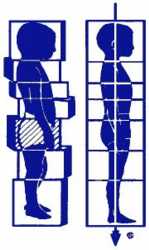Is Roanoke or Northern Virginia too far to travel? Go to www.rolf.org to find a rolfer in your area |

Home |
About Us |
Rolfing®FAQ |
Testimonials |
Appointments |
|
|
What Is Rolfing?Rolfing, or structural integration, is a system of soft tissue manipulation, which works on connective tissue, including muscles, tendons, ligaments, and fascia (the structure that surrounds muscles). Dr. Ida Rolf, Ph. D. is the founder of Rolfing. Her research revealed that applying a systematic approach of soft-tissue manipulation can change tense and stressed muscles. The goal of Rolfing is to balance all the muscle structures in the body. This is done in a series of 10 sessions (each session lasting approximately and hour or more), except in the case of serious traumatic injuries. Who Is Rolfing For?Rolfing is for those suffering from chronic injuries of the neck, shoulders, back, and any area where muscles structures are involved. This includes nerve pain due to tight muscles. Rolfing is also for those with no real physical complaint, but lack energy and want to retard the aging process or release trauma due to an emotional experience. Rolfing is for anyone who wants to manage stress--be it at work, home, or athletic performance. Rolfing is for anyone who wants greater energy and efficiency in living. How Can I Experience Rolfing?E-mail Rolfing Associates to schedule a free consultation and demonstration to understand and experience how it feels and if it is appropriate for you. Please understand that this is a 15 minute demonstration and will not have the effect of a full hour session. If you decide that you want a session, you may schedule one. We do ask that you commit to at least three sessions if you want to know if Rolfing will help your situation. Is Rolfing Covered By Insurance?It depends on the insurance policy and the circumstances. With a physician’s prescription and referral, workman’s compensation and personal injury cases are usually covered. With personal health insurance, we advise clients to ask if physical manipulation or structural integration is covered and give them the procedure code: CPT code # 97140 (manual therapy). After you have completed a number of sessions, at your request, we will provide you with a letter and statement of the charges. For health insurance coverage, payment is required at the time of the session. We have found that if you fill out your own health insurance forms, there is a better chance that Rolfing will be covered. Does Rolfing Hurt?"I have heard that Rolfing is painful." Tension is stored in the body by the way of tight muscles. Sometimes releasing this tension may cause some discomfort. To get a sense of this release, you can reach across your shoulders and feel a hard tight place. Press your hand on this spot and you will feel discomfort, then after holding the pressure briefly, you will feel a release and no discomfort. This is similar to the Rolfing experience. We work with clients at a pace that allows them to participate. We also work with very small children and again they are able to benefit because they immediately feel the release of pain causing tension. What is the difference between Rolfing and
|